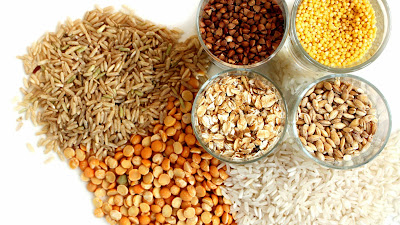A Grain Analysis Checks For Mycotoxin Contamination, Pesticide Residues, And Physical Attributes Like Size And Weight To Evaluate Grain Quality
 |
| Grain Analysis |
Grain analysis is used to evaluate grain quality by looking for mycotoxin contamination, pesticide residue, and physical parameters like size and weight. During distribution, purchase, and storage, the grains are monitored. The physical features of the grains, such as size and weight, as well as pesticide residue and mycotoxin contamination, are all tested to determine the quality of the food grains. Food grains are frequently tested in order to keep track of their quality, storage time, purchase, and distribution.
Globalization in the grain trade, strict government restrictions regarding the quality of food grains, and foodborne disease prevention programmes are some of the primary reasons driving the Grain Analysis Market. Technological advancements in devices for obtaining reliable findings and a check for a wide variety of pollutants also help to drive market expansion. The demand for grain analysis has risen dramatically in order to reduce grain wastage due to pests and to extend the storage duration. The market is predicted to rise in popularity over the forecasted period, owing to rising consumption of food grains and rising production of food grains. Urbanization, population growth, disposable incomes, and other positive socioeconomic and demographic factors
The rise in the level of life, combined with the growing need for exact future grain production-related information from pesticide manufacturers, seed producers, financial institutions, merchants, and other stakeholders, has boosted the global Grain Analysis Market.There are some constraints and hurdles that will stifle overall market expansion. During the projected period, challenges such as a lack of awareness among people in developing and undeveloped countries about the safety and quality of food grains are expected to stifle growth. Furthermore, lack of coordination among market participants, inappropriate implementation of regulatory regulations, and a lack of harmonisation in food safety standards are all possible barriers to the worldwide grain analysis industry's overall growth. Nonetheless, technical improvements in the testing business will continue to open new doors for the grain analysis industry.
The quality of dietary grains is determined by Grain Analysis Market. Furthermore, the capacity to design and implement new legislation and infrastructure to control food safety concerns is influenced by the country's economic situation, which varies from country to country..One of the main challenges limiting the expansion of the grain analysis business is the lack of regulatory harmonisation. Different food safety control methods and regulatory approaches have been adopted by various countries. The disparity between these adopted regulations could result in an international dispute, which would stifle market expansion.
This trend is particularly noticeable in countries that have developed scientific risk-based frameworks to control national food safety standards. Furthermore, the capacity to design and implement new legislation and infrastructure to control food safety concerns is influenced by the country's economic situation, which varies from country to country.



Comments
Post a Comment